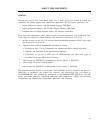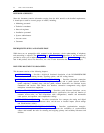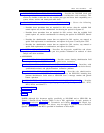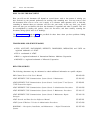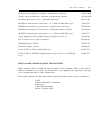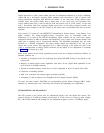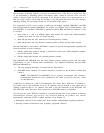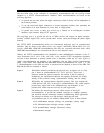
xx
ABOUT THIS DOCUMENT
INTENDED AUDIENCES
Since this document contains information ranging from the brief tutorial to the detailed requirements,
it should prove useful to several groups of readers, including:
●
●
●
●
●
●
●
Marketing personnel
Technical consultants
Network engineers
Installation personnel
System administrators
Account teams
Customers
PREREQUISITE SKILLS AND KNOWLEDGE
While there are no prerequisite skills assumed in this document, a basic understanding of telephony
and networking is required. The GLOSSARY and ABBREVIATIONS appendixes of this document are
provided to assist you in understanding the terminology used herein. See the Related Sources heading
later in this preface, About This Document, for a list of other documents that discuss similar topics.
HOW THIS DOCUMENT IS ORGANIZED
This document consists of the following chapters:
1.
2.
3.
4.
5.
INTRODUCTION — Provides a high-level functional description of the DS1/DMI/ISDN-PRI
channels, available framing formats, signaling options, and line coding formats.
NETWORK CONNECTIONS AND CONFIGURATIONS — Describes functional connection
arrangements to private network facilities (private endpoints) and to public network facilities
(public endpoints). Included along with the public network discussions are Switched Access
connections and services. This section also describes connection arrangements using digital
multiplexer transmission equipment.
DS1 — TRANSMISSION AND CABLING — Describes cable distance limitations versus
cable size, permitted cable types, the DSX-1 interface specification, the need and function of
customer service units, on- and off-premises cable configurations, metallic and nonmetallic
cable options, and equalizer and compensation settings.
THE DIGITAL LOSS PLAN — Describes transmission loss concepts, the analog and digital
loss plans and the differences between them, and the user or installer impact (switch settings
and administration values).
SYNCHRONIZATION OF DIGITAL FACILITIES — Describes synchronization strategies,
objectives, and requirements. This chapter also discusses the availability of synchronization
sources and includes the rules for selecting and assigning primary and secondary references and
facilities.










